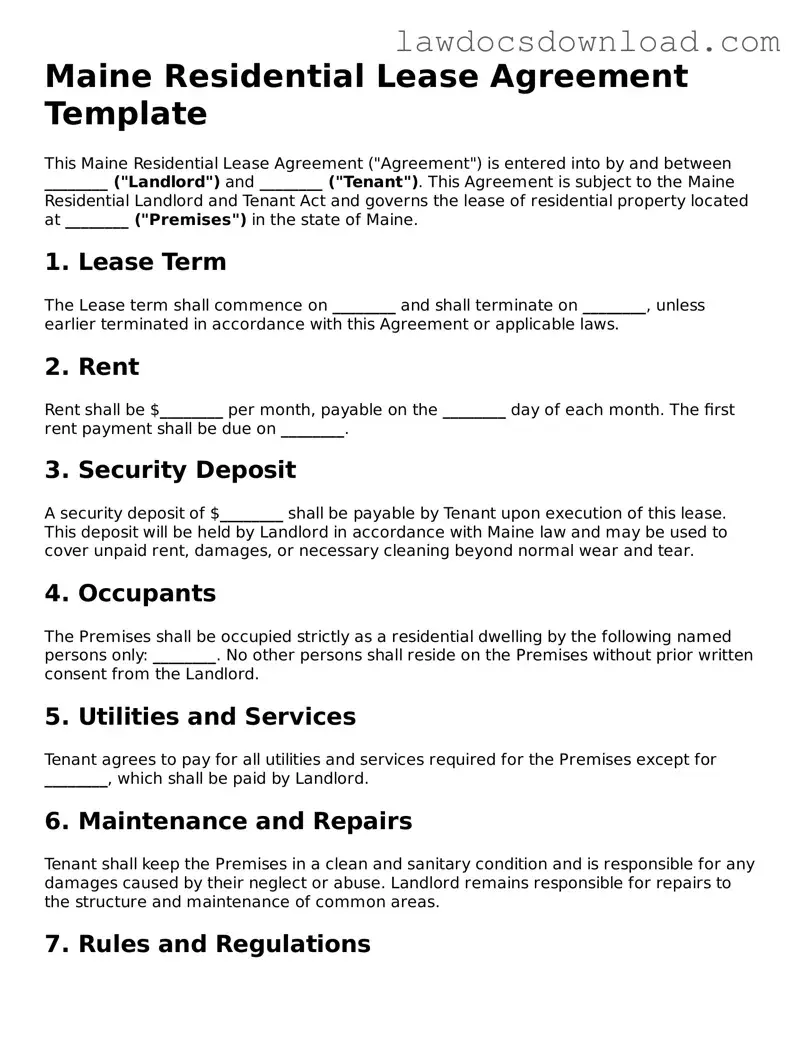Filling out the Maine Residential Lease Agreement form correctly is crucial to avoid future disputes and ensure clear communication between the landlord and the tenant. One common mistake is neglecting to provide all necessary contact information for both parties. This includes full names, current addresses, and reliable contact numbers. Without this information, communication can be obstructed, affecting the resolution of issues that may arise during the lease term.
Another issue arises when individuals fail to clearly specify the duration of the lease. Whether it's a standard 12-month lease, a month-to-month arrangement, or another specified term, it must be clearly written in the agreement. Mistakes in this area can lead to misunderstandings about when the lease ends and under what conditions it can be renewed or terminated.
Often, people overlook the importance of detailing the rent amount, payment method, and due dates. This can lead to disputes over late fees, the acceptable payment form, and even the amount of rent itself. It's vital to document the monthly rent, where it should be sent, the acceptable payment methods (e.g., check, electronic transfer), and any late payment policies, including any fees.
It's not uncommon to find lease agreements without detailed descriptions of the security deposit. Tenants and landlords should clearly understand the deposit amount, its purpose, and the conditions under which it will be returned or retained. Additionally, Maine law requires landlords to return security deposits within a specific timeframe after a lease ends, so noting this in the lease is beneficial.
A critical mistake is the omission of policies regarding pets, smoking, or other specific rules relevant to the property. If landlords allow pets, the agreement should specify types or breeds of pets allowed, any additional deposits required, and the expectations for pet behavior and owner responsibilities. Similarly, clear policies on smoking, noise levels, and other considerations should be included to prevent future conflicts.
Failing to document the condition of the rental property at move-in is another oversight. A detailed checklist of the property's condition, signed by both parties, can prevent disputes over damages that were present before the tenant moved in. This ensures that tenants won't be wrongly held responsible for pre-existing damage.
Sometimes, lease documents miss specifying the tenant's and landlord's maintenance responsibilities. Clearly defining who is responsible for routine maintenance, emergency repairs, and upkeep of common areas prevents disagreements and ensures the property is well-cared for during the lease term.
Forgetting to include clauses about the renewal and termination processes is another mistake. Specify how much notice the tenant must give to vacate or renew the lease and under what circumstances the landlord can terminate the lease. This information helps both parties plan for the future.
Last, ignoring the requirement to adhere to local, state, and federal laws within the lease agreement can lead to legal issues. The lease should mention adherence to fair housing laws, health and safety codes, and local ordinances. Compliance protects both parties and ensures a lawful, respectful leasing relationship.
